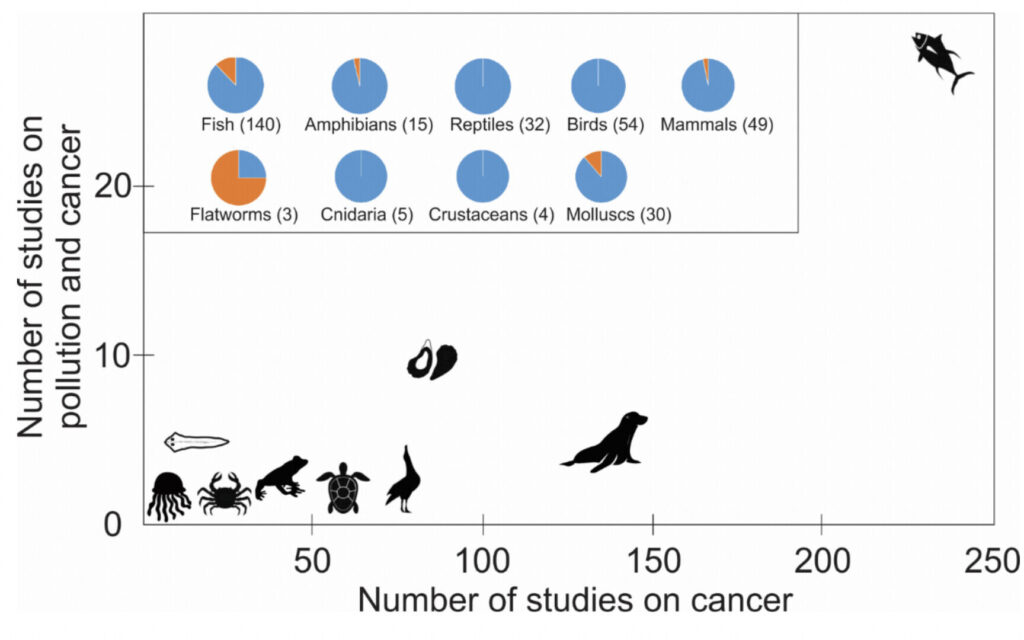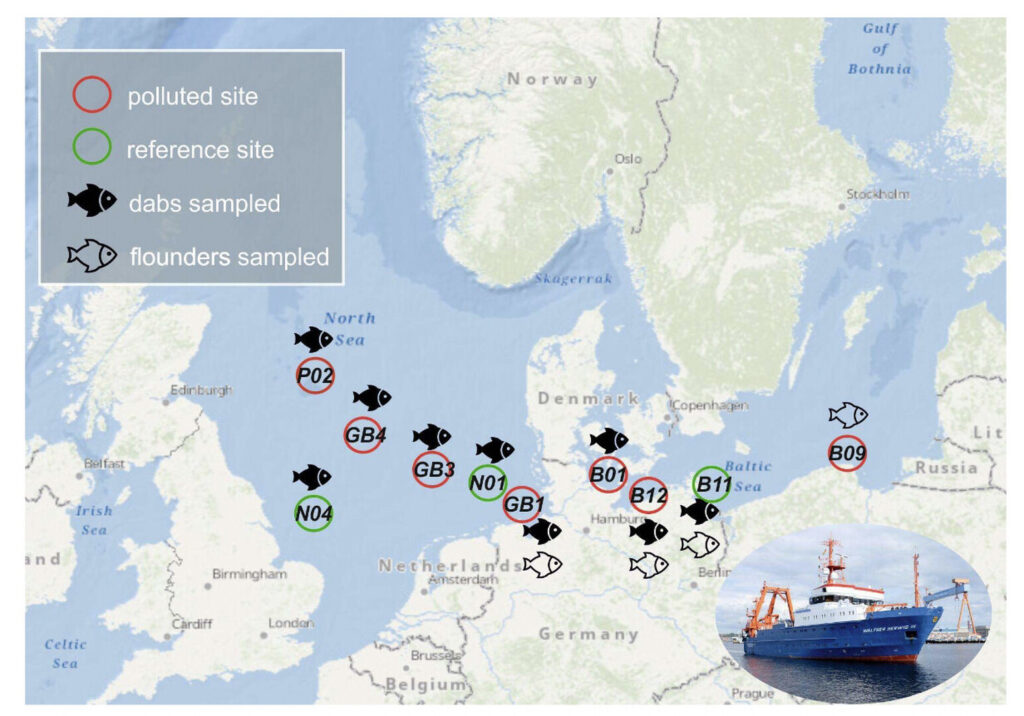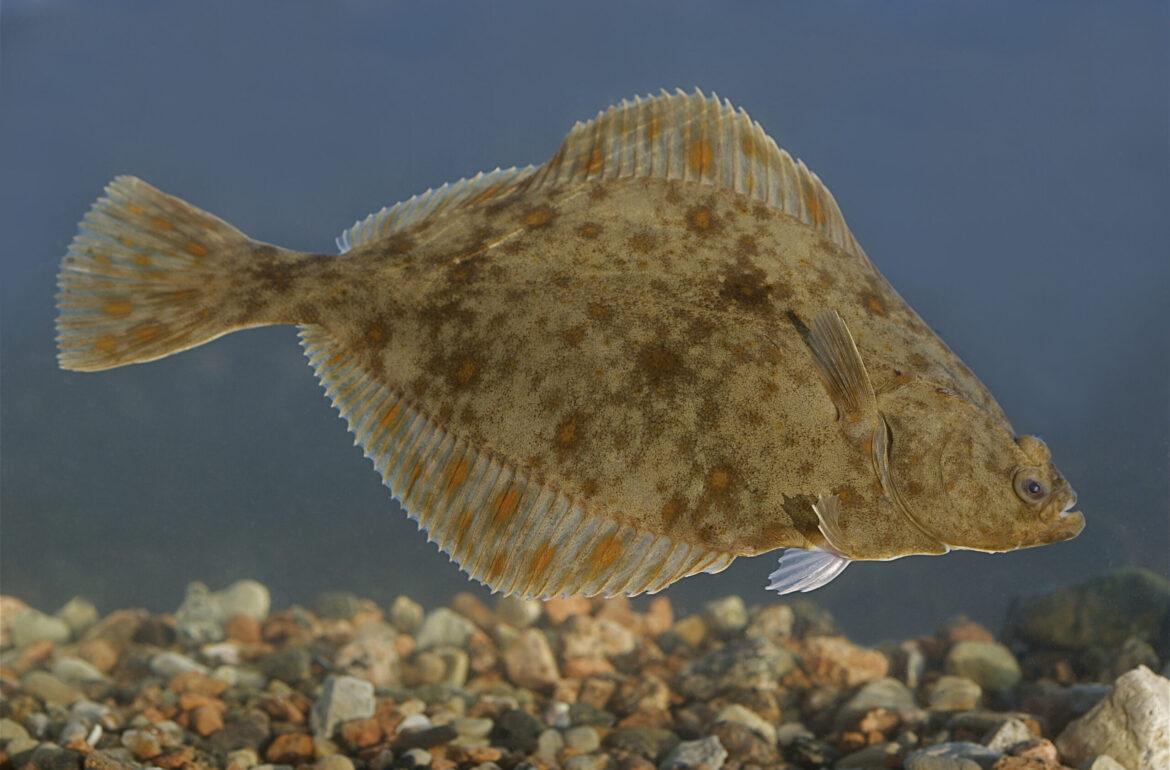Cancer affects all multifaunal organisms, including fish, not only humans. A recent doctoral dissertation from the University of Tartu suggests that environmental protection should account for the ability of various species populations to combat cancer.
Cancer can affect all organisms, but species’ resistance to this disease varies.
As larger body size and longevity increase the likelihood of cancer in animals, larger species with longer lifespans have evolved more robust cancer defence mechanisms. For example, the risk of dying because of cancer is 17 per cent in humans but only 5 per cent in elephants.
Pollution puts humans and other animals at even higher risk of developing cancer, and since pollution spreads rapidly through water and accumulates for extended periods of time in sediments, aquatic animals are especially vulnerable.
Ciara Baines, a marine biologist at the University of Tartu, studied the links between pollution and cancer in aquatic species. She said that at least 300 species of fish are known to have cancer: fish usually develop tumours on their epidermis, gills and liver.
However, she continued, the majority of scientifically described fish species have not been examined from this perspective. Even less clear is the relationship between cancer and environmental pollution. “Only about 30 species have been linked to increased cancer due to pollution. So there are still significant gaps in our understanding,” she said.

There have been several waves of research on the impact of pollution on cancer development. The last time the subject was more widely discussed was in the 1980s. Since then, the prevalence of fish cancer has been used to gauge the region’s overall purity. “Bottom-dwelling species are especially vulnerable,” she warned.
There has been a resurgence of interest in the topic among researchers in recent years. “Due to the low cost of genetic technology, the number of studies on this topic will almost certainly increase even further in the future.” The ability to sequence fish genetic material at a cheaper cost helps in understanding their ability to adapt to various toxic chemicals.
Two species of flatfish were studied in the Baltic and the North Sea — the two most polluted seas — in order to figure out the link between cancer defenses and pollution
Baines comparative study of two species living at the bottom of the Baltic and North Seas, flounder and dab, allowed to predict which fish species have the strongest and weakest genetic defenses against cancer.
Although it is important to investigate the effects of chemicals in the lab, she said that the lab would never replicate what could be observed in the wild, in the species’ natural habitat. “Fish are never exposed only to a single toxin. Hundreds, if not thousands, of hazardous chemicals are floating around in their environment, and this is exacerbated by additional factors, such as differences in salinity, temperature and the risk of falling prey to predators, all of which ultimately influence natural selection,” Baines explained.
The researcher conducted a field study of two flatfish species to investigate whether differences in cancer prevalence in fish from polluted vs clean sites could be explained by differences in gene expression and oxidative DNA damage levels: essentially, to explore whether fish living in polluted areas could indeed evolutionarily adapt and reduce their cancer risk. In short, she wanted to understand why one is more vulnerable to cancer than the other.
Baines studied two of the world’s most contaminated seas — the Baltic and the North Sea. Since the beginning of the industrial revolution, large quantities of oncogenic contaminants have polluted these maritime habitats. According to the researcher, these habitats could be seen as “natural laboratories” for studying the interplay between the evolution of cancer defenses and pollution.

“Unfortunately, the Baltic Sea is one of the most polluted seas in the world, but it is a good place to study pollution-related cancer. Also, salinity has a strong impact on the health of organisms, so comparing this factor was interesting as well,” said the marine ecologist.
The evolution of cancer-fighting defense mechanisms is unpredictable
European flounder (Platichthys flesus L.) and dab (Limanda limanda L.) inhabit both relatively clean and strongly polluted habitats in the Baltic and North Seas.
Baines found that there are differences in adaptations mechanism that develop in the populations living in more polluted areas and help them to better cope with the cancer-promoting effects of pollution.
For cancer to occur in flounder, many genes must be suppressed, while the same is not seen in dabs. This suggested to the researcher that flounders have defense mechanisms against cancer that are absent in dab.
Although both species were susceptible to cancerous skin and liver lesions, the evidence suggests that dabs have an almost 10 times higher prevalence of liver neoplasms than European flounders. Moreover, flounders living in highly polluted sites do not seem to have higher cancer prevalence compared to their conspecifics in cleaner sites. At the same time, in dabs, cancer prevalence does vary relative to local pollution levels. “Investigating the links between pollution and cancer is therefore probably more meaningful if we make cross-species comparisons rather than only looking at individuals of the same species in different places,” Baines said.
The study showed differences in cancer defenses when comparing flounders and dabs and within the species, depending on whether a population is living in a strongly polluted area or not. In other words, certain cancer defense mechanisms have emerged in one of the examined species, the European flounder.
Baines suggested that exploring these potential differences in cancer defenses in wild organisms could help to predict cancer dynamics in our changing environments and whether a species has adapted to cope with pollution-induced cancer.
There is no link between pollution-induced free radicals and the DNA damage they cause, and the presence or absence of cancer
Baines also tried to shed light on the mechanism by which pollution actually causes cancer. Pollutants are thought to play a key role in free radicals generated in the body. These, in turn, break down DNA and cause different mutations. “However, I did not see in my work that the amount of DNA damage could have been used as a predictor of whether or not the lesions examined had cancer,” the marine ecologist said.
The researcher suggested that mechanisms other than oxidative damage play a more significant role in determining the likelihood of cancer in these two species.
Genes suppressing cancer develop at the expense of other evolutionary needs
Additionally, more DNA damage was found in older and larger fish. The genetic material of Baltic flounder was also more damaged than that of their North Sea relatives. Baines suggested that fish that live longer and grow larger have to compensate for the number of copies of genes allowing them to grow large with additional copies of genes suppressing cancer.
Taken as a whole, the results of the thesis suggest that more attention needs to be paid to long-term effects when setting pollution limits. Diseases such as cancer do not occur overnight. “Much also depends on the exact cocktail of chemicals that fish are exposed to on a daily basis. Different compounds can both amplify and diminish each other’s effects.”
“One thing is for sure, the cleaner the environment, the less pressure on fish. Yes, some organisms may be able to adapt to pollution over longer periods of time, but the energy spent on these adaptations could be used much more wisely elsewhere,” Baines said.
Check out the thesis in the University of Tartu digital collection. Baines was supervised by Tuul Sepp and Lauri Saks from the University of Tartu and Mathieu Giraudeau from the University of La Rochelle. The supervisor was Joachim Sturve from the University of Gothenburg.
Written by Jaan-Juhan Oidermaa and Kristina Kersa. This article was originally published on the Estonian Public Broadcasting webpage.
 Back
Back



